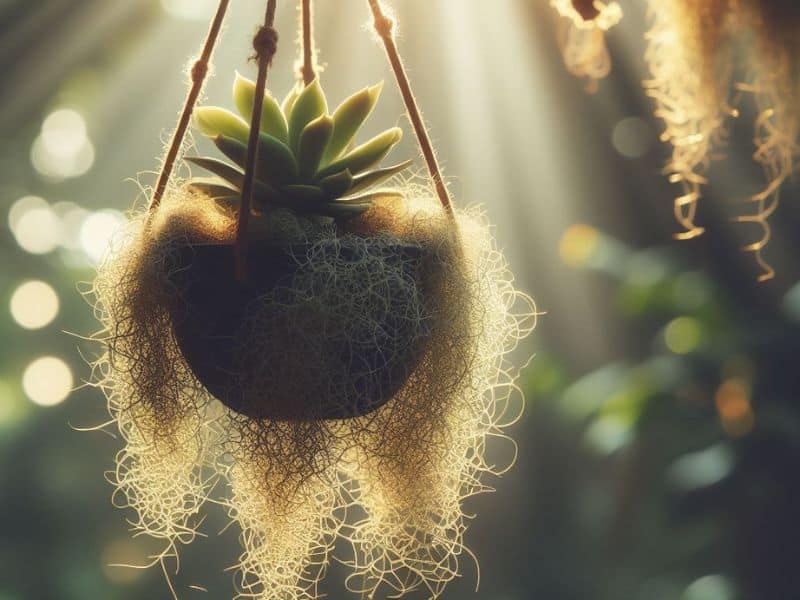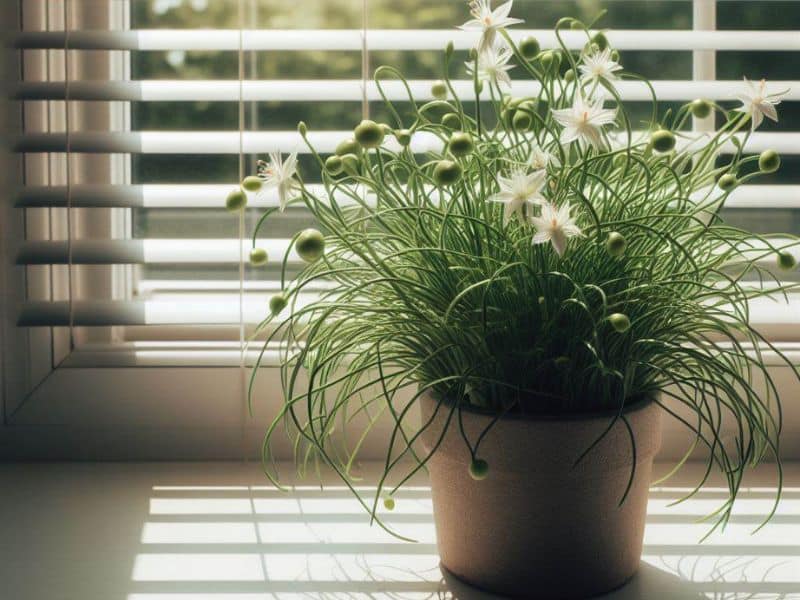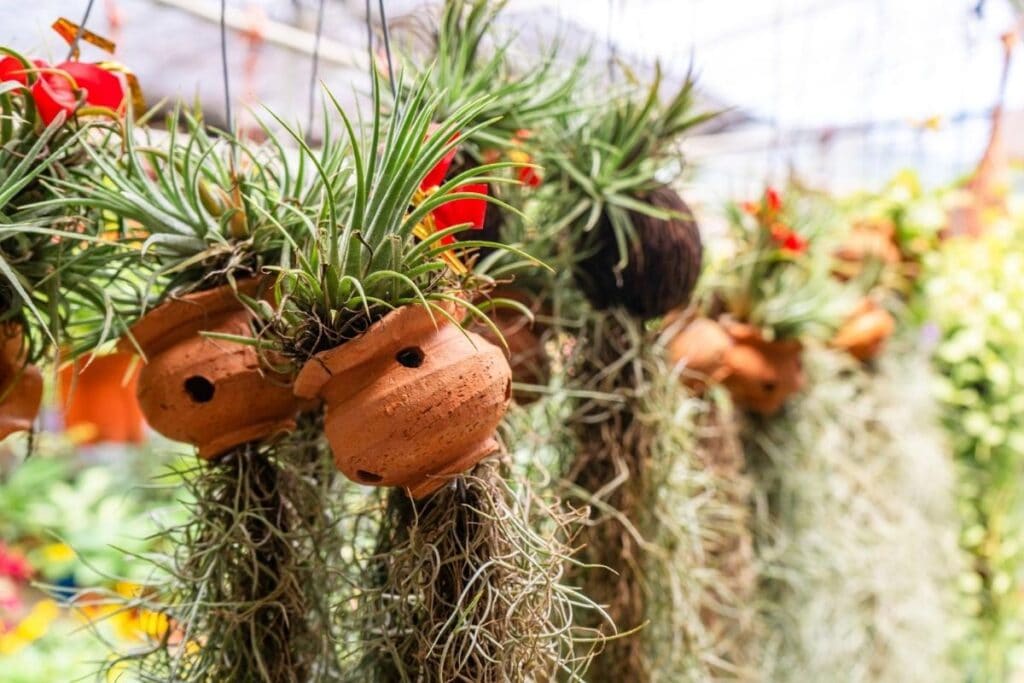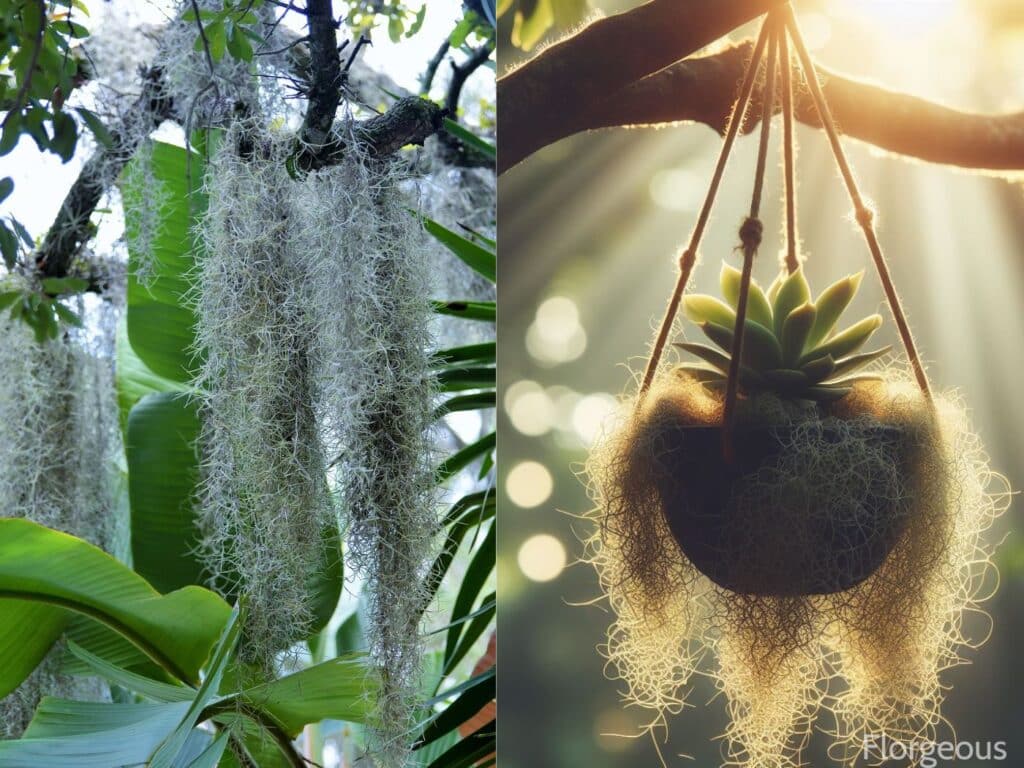Ever walked through a garden and done a double-take, thinking you’ve spotted a misplaced wig, only to realize it’s actually a plant? You’re not alone. The plant kingdom is full of surprises, and some of its members bear an uncanny resemblance to human hair.
In this article, we’ll take you on a fascinating journey through the world of hair-like plants. From the wispy strands of Spanish moss to the flowing locks of the ponytail palm, you’ll discover how these unique plants have adapted to their environments and why they’ve adopted such distinctive appearances.
So, get ready to delve into the intriguing world of plants that look like hair, we promise it’s a botanical adventure you won’t want to miss.
Historical Significance of Hair-Like Plants
Countless plants with hair-like features have held fascinating significance in our collective history. Here, let’s delve into these captivating tales.
Cultural Representation
Hair-like plants, enthralling in their appearances, hold deep cultural symbolism across various civilizations. For example, Spanish moss, often seen draping from tree limbs in enchanting, hair-like tendrils, has been viewed as a symbol of romantic longing in certain Southern cultures.
In Polynesian culture, the “Old Man’s Beard” plant mirrors the wisdom and respect accorded to the elderly. Such plants evoke powerful imagery, aiding in storytelling and instilling cultural values.
Historical Uses in Medicine and Rituals
These particular plants not only charm us with their appearance but also held essential roles in historical medicinal practices and sacred rituals. Spanish moss was commonly used in poultices for wounds by Native Americans, valued for its antiseptic properties.
The ‘Rhipsalis’, a cactus with cascading hair-like tendrils, had a sacred status in tribal rituals, believed to bring protection and prosperity. By appreciating these past usages, you gain an insightful tableau of our shared heritage with these remarkable hair-like plants.
Top Plants That Mimic Human Hair
Delving a bit deeper, here are a few standout species truly mimicking humans’ strands:
Spanish Moss: The Airy Hair of the Trees

Spanish Moss, swaying in the southern US breezes, truly resembles flowing gray hair. Kissed by the sun, these plants drape over trees, creating an ethereal, haunting beauty in the forest.
Revered for their delicate, strand-like appearance, Spanish Moss hides an amazing secret: they thrive on air, not soil.
Rhipsalis Baccifera: The Misty Mophead

Meet Rhipsalis Baccifera or you can call it the misty mophead. Ever seen a plant with an uncanny likeness to a wild, tangled mop of curly hair? That’s Rhipsalis Baccifera for you.
Thriving in tropical climates, they’re proof of nature’s knack for truly unexpected creations. Their cascading tendrils create a playful display in hanging baskets, making for a fantastic conversation starter.
Tillandsia Usneoides: Beard of the Woods

Tillandsia Usneoides, also known as Air plants, or quite aptly, ‘Beard of the Woods,’ completes our eccentric plant trio. Hanging like long silver-gray strands from tree branches, they perfectly mimic a wizard’s beard.
Just imagine, a plant with a fondness for draping itself like a fancy facial fuzz on trees! Their flair for putting on such a theatrical display truly serves as an outlandish element in our natural world.
Next time you stroll through a park, keep your eyes peeled for these peculiar plants. Their resemblance to human hair is not just visually amusing, it’s also a remarkable testament to nature’s diverse and whimsical creativity.
Growth and Care Tips for Hair-Like Plants
Plants that mirror the look of human hair can bring whimsy and intrigue to your garden or home, but they require specific care and environment for healthy growth.
The Best Environments for Growth
To help your hair-like plants thrive, cultivating the right habitat is paramount. Spanish moss, for example, will flourish in high humidity and prefers the added benefit of a host tree for support.
Unlike other houseplants, it is usually found draped over tree branches, making use of the nutrients available in the air and rain. Think about recreating this setting at your own home for the plant.
Rhipsalis Baccifera, described as a “mophead” because of its hair-like fronds, does best in bright but indirect light, and should be placed in a high position so its tendrils can hang freely.
Also preferring bright but indirect sunlight is the Tillandsia Usneoides, affectionately likened to a wizard’s beard. This epiphytic bromeliad thrives in well-aerated spaces and prefers to be hung up high, allowing its long, hair-like offshoots to dangle uninhibited.
Essential Care Tips: Watering and Light Requirements
The one thing that all hair-like plants have in common: they are sensitive to overwatering. For easy maintenance, mist until fully soaked and let dry thoroughly before the next water application. You can dunk or spray them as per the plant’s needs, but just be cautious about its saturation.
As for sunlight, while these plants appreciate bright but indirect light, they can adjust to lower light conditions over time. However, do note that too much intense, direct sunlight can cause the plants to scorch. So, keep them in a brightly lit area without exposing them directly to the sunshine.
Creative Uses of Hair-Like Plants in Modern Decor
Enthusiasts and hobbyists have taken hair-like plants beyond horticulture, incorporating their aesthetically pleasing features into interior decoration and fashion. Let’s delve into how these unique plants have influenced modern decor and creativity.
Indoor Decorations and Themed Gardens
Hair-like plants pack a punch when it comes to interior decorations and themed gardens. Their distinct features blend into contemporary home interiors, providing a fresh, vibrant look.
Whether hung from the ceiling, placed in hanging pots, or implemented into themed gardens, these plants offer an edge to your decor you didn’t know you needed. Having a small indoor garden with a combination of Spanish moss, Rhipsalis Baccifera, and Tillandsia Usneoides can be a refreshing and invigorating sight.
Hair-Like Plants in Art and Fashion
If you think plants are confined to gardens, think again! Hair-like plants have found their way into the realms of art and fashion. Florists and fashionistas incorporate these plants into bouquets, flower crowns, and garment accessories to deliver added texture and organic appeal.
Also, artists are using these versatile plants in their installations and mixed-media art pieces, as they weave natural beauty into their imaginative creations. So next time, when you are looking to add an extra flair to your outfit or artwork, hair-like plants may well be just what you need.
Visual Gallery: Stunning Displays of Hair-Like Plants
Dive into a visual spectacle of hair-like plants in various settings. Be enraptured as we delve into captivating photos and engaging stories behind these remarkable flora.
Photography from Botanical Gardens
Beautiful botanical gardens worldwide have embraced hair-like plants, displaying them in a fashion that highlights their charming, hair-mimicking structures.
You’ll spot the carefree drift of the Spanish moss, the vibrant strands of Rhipsalis Baccifera, and the subtle elegance of Tillandsia Usneoides. Each image echos the dedication of horticulturists nurturing these captivating plants, allowing you a glimpse of their labor of love.
User-Submitted Photos and Stories
Next, we delve into a collection of photos from plant enthusiasts just like you. Hear their stories of fostering, nurturing, and making these hair-like plants an integral part of their lifestyle. From indoor home decor to fashion, their ingenuity will leave you inspired.
You may well find a piece of your own journey echoed in their words or perhaps a spark to embark on a new path of plant appreciation. Their images and narratives aren’t merely photos or stories; they are personal experiences shared and cherished.
See more:







